The pattern is clear. When the message that filters out of the White House focuses on tariff negotiation, as it did on Monday afternoon and yesterday morning, stocks go up (“Japan secures priority tariff negotiations”). When the message focuses on tariff escalation, as they did yesterday afternoon, stocks go down (“104% tariffs going into effect on China tonight”). Perhaps an experiment with saying nothing is in order? Email us: robert.armstrong@ft.com and aiden.reiter@ft.com.
Treasuries
Yesterday’s letter was about whether US stocks have been scared into cheapness by President Donald Trump’s tariffs. They have not. But it doesn’t make loads of sense to talk about the valuation of one asset class in isolation from others. The right question (in investing and life) is always “compared to what?” Stocks can be expensive only if there is a better risk/return alternative. They can be cheap only if there are worse ones.
So in today’s letter we look at the paradigmatic accompaniment to US stocks: US Treasuries. If stocks are not cheap in the wake of the tariff explosion (as I argued yesterday), how do Treasuries look? Specifically, do they look like an effective hedge for equity risk?
Before digging into the numbers, a declaration of bias. My general view is that Treasuries are going to work less well for investors in the next few decades than they worked in the past few. Partly, this is an obvious point. Treasuries’ roaring 40-year bull market ended with the Covid-19 pandemic. With yields approaching zero, there was nowhere left to go. But I also hold a more speculative view that the world is headed towards permanently higher inflation and inflation volatility — driven by fiscal excess, demographics and de-globalisation. If this is right, Treasuries’ risk/return mix won’t be great and they won’t diversify stocks as effectively. Equities will remain the main event, whether or not US stocks look especially attractive at a given moment.
Treasuries were an excellent hedge after last week’s tariff announcement — at first. On Thursday and Friday, as investors took flight from equities, some of that capital went into Treasuries, driving prices up and yields down, just as a diversified investor would have hoped. What has happened since, as stocks have zigzagged sideways, is less appealing. Yields have risen, erasing bonds’ gains.

The standard explanation for this unsettling pattern is that as market volatility has risen, leveraged Treasury trades of one sort or another are being deleveraged or unwound (see the Financial Times stories here and here). This makes sense, and I’m sure it is part of the story. But isn’t it natural to think that bonds are reflecting inflation risks from tariffs? Tariffs, we are told, are stagflationary. Producers and importers will pass on as much of the tariffs as they can, increasing final prices while dampening demand.
The market seems to be unconcerned. Without over-reading markets’ moves over just a few crazy days, implied inflation expectations have only risen a little since last Wednesday, and only at the very short end of the interest rate curve. Here is the one-year inflation swap rate, which has nudged up by 20 basis points since the tariff announcement:

Longer-term measures seem to indicate that, if anything, inflation expectations have fallen:

This sanguine attitude towards inflation is also reflected in the futures market’s implied estimate of the Fed’s policy rate at the end of this year, which already priced in three cuts before “liberation day” and has added another cut since:

We hate to doubt the wisdom of the crowd, but this seems optimistic. Even if inflation continues to hover around 3 per cent, the Fed will hesitate to cut rates after three years of battling rising prices, especially if the labour market holds up. Inflation may rise before unemployment does. Manoj Pradhan at Talking Heads Macro says most labour market indicators
. . . are consistent with expansion, presently — not contraction . . . That trend could turn slowly over three to four months, but the path is not clear. Over that time, it is also possible that [tariffs] push up goods inflation, which has [provided] the lion’s share of disinflation over the past few years. If goods prices go up while the labour market holds its own, [the Fed could] hold its position, to signal “we are protecting the economy” . . . That does widen the path to a recession, and once a recession hits, yields can fall because services and other types of inflation tank, but the timeline and path is not guaranteed.
Fiscal policy complicates the picture. The US economy and the market have been supported heavily by loose fiscal policy over both Trump’s first administration and Joe Biden’s presidency. As we wrote in a recent letter, Trump’s tax policies look to be fiscally positive — but significantly less so than the past two administrations. But if the economy suffers a major slowdown, Trump and his party may have the political leeway for fiscal stimulus — leading to wider deficits, high inflation risks and higher Treasury yields. As Jason Pride at Glenmede put it to us: “We should not be worried about the impact of tariffs in magnitude and deficit at the same time, as they will play off each other . . . Worrying about them side by side is too many simultaneous unknowns.”
As tariffs, a high deficit and a weakening economy collide, we’re not terribly confident that rates are headed down, or that inflation risk will remain contained. So we are not terribly confident that stock-bond correlation will be reliably negative. It’s a mean old world out there right now.
Join us on April 23 at 8am ET/1:00pm BST for a live Unhedged event discussing Trump’s impact on the markets. Sign up here.
One good read
World’s most annoying person discovered.
FT Unhedged podcast

Can’t get enough of Unhedged? Listen to our new podcast, for a 15-minute dive into the latest markets news and financial headlines, twice a week. Catch up on past editions of the newsletter here.





